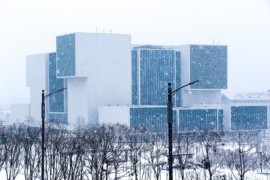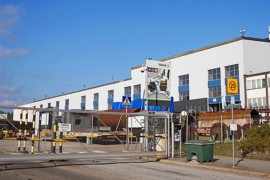At the Scientific and Technical Centre for Building (CSTB), Thibaud Rousselle is responsible for the only French certification governing the quality of heating networks.
What is the role of the CSTB?
The Scientific and Technical Centre for Building is an EPIC (an industrial and commercial public establishment) under the aegis of the Ministry of Housing and rural and territorial Equality. Our primary mission is to conduct research on all construction products, and also on some equipment. Our second business is the assessment, certification and issuing of technical advice on innovative products. We also have scientific and technical expertise. Finally, we are a training organization and we publish books as part of the dissemination of knowledge.
Within the CSTB, I am responsible for the Process Services Systems Division, which is itself part of the Hydraulic and Sanitary Equipment department. It is for this reason that I am in charge of the mark of quality “Certified CSTB Certified” on the pre-insulated pipes for district heating.
How would you define this certification?
What you should know is that, although there are European standards, heating networks are subject to a technical review procedure, i.e. an initial assessment of a process in which the assessment process must be described as well as carried out. Technical advice is kind of a picture at a given moment that verifies the quality of the process and that the installation is maintained in good order. To ensure that the quality of this process is maintained, it was decided to introduce a certificate of quality.
When was it created?
The Construction Quality Agency (AQC) which includes technical inspectors and representatives of insurers and end-users found significant leaks in heating networks in the late 90s when it had been decided to place this sector of activity under observation. In 2002, in partnership with industry leaders, we decided to develop a certification standard to provide a response to these failures. The first certificate was issued in 2009.
What does the certificate involve?
The first step requires meeting existing standards for the products and also meeting quality assurance issues resulting from the ISO 9001 standard, such as written procedures or calibration of production and controlling devices. However, the essential elements relate to technical assistance provided by technical advisors (the manufacturer or the company that bought and installed the product) to their customers and on the training of installers.
So it doesn’t really concern the products themselves?
Generally, the products are of good quality. The problem is how they are installed. In district heating systems, there are steel pipes which carry water or water vapour. Initially an insulator (polyurethane foam) is placed around the tube and then an outer jacket of polyethylene is added. Once the tubes are brought to the site, they are then welded, but following this the insulation and the outer casing must be reconstructed. If this reconstruction is poorly performed, moisture will pass through and create corrosion in the steel tube and hence a leak.
Quels sont les effets de cette certification ?
Depuis que l’AQC a mis les réseaux de chaleur sous observation, celle-ci n’a jamais été levée. Mais chaque industriel qui demande et obtient la certification voit automatiquement l’observation levée en allant présenter son dossier auprès de la C2P (Commission Prévention Produits), sous-commission de l’AQC. Cela offre une garantie de résultats au prescripteur ou à l’utilisateur et permet aux industriels de voir leur prime d’assurance baisser.
So it was the installation process that was the cause of the problems?
Yes, and certification primarily serves the purpose of ensuring that the installation is properly carried out. Installers must be trained by the technical advisor and receive a qualification.
What are the effects of this certification?
Since the AQC first placed heating networks under observation, this observation has never been lifted. However, if a manufacturer applies for and obtains certification, the manufacturer will automatically have the observation removed by presenting its case to the C2P (Product Prevention Commission) Subcommittee of AQC. This offers a guarantee of results to the supplier and to the end-user and enables manufacturers to reduce their insurance premiums.






